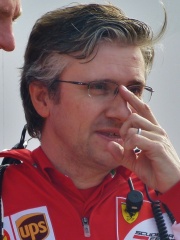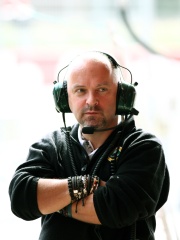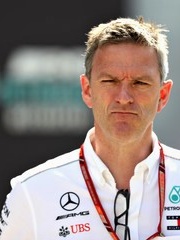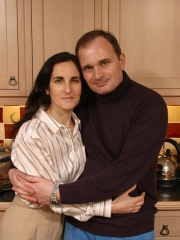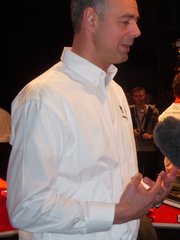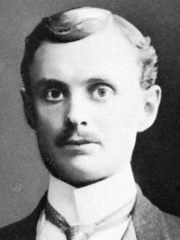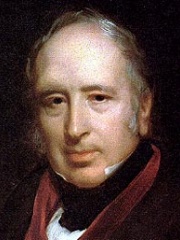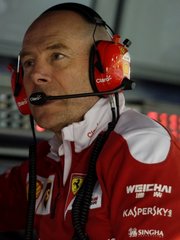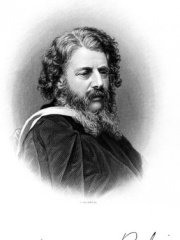
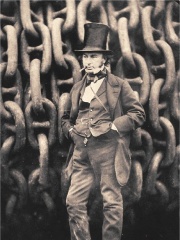
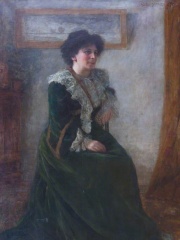
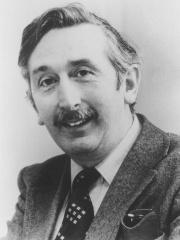

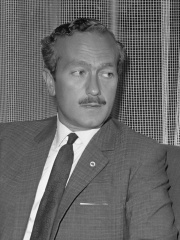
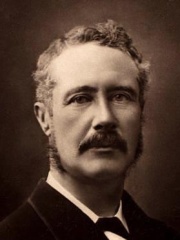
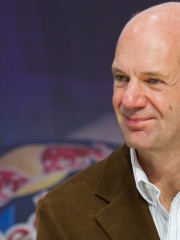
The Most Famous
ENGINEERS from United Kingdom
This page contains a list of the greatest British Engineers. The pantheon dataset contains 389 Engineers, 62 of which were born in United Kingdom. This makes United Kingdom the birth place of the 2nd most number of Engineers.
Top 10
The following people are considered by Pantheon to be the top 10 most legendary British Engineers of all time. This list of famous British Engineers is sorted by HPI (Historical Popularity Index), a metric that aggregates information on a biography's online popularity. Visit the rankings page to view the entire list of British Engineers.

1. William John Macquorn Rankine (1820 - 1872)
With an HPI of 76.98, William John Macquorn Rankine is the most famous British Engineer. His biography has been translated into 59 different languages on wikipedia.
William John Macquorn Rankine (; 5 July 1820 – 24 December 1872) was a Scottish mathematician and physicist. He was a founding contributor, with Rudolf Clausius and William Thomson (Lord Kelvin), to the science of thermodynamics, particularly focusing on its First Law. He developed the Rankine scale, a Fahrenheit-based equivalent to the Celsius-based Kelvin scale of temperature. Rankine developed a complete theory of the steam engine and indeed of all heat engines. His manuals of engineering science and practice were used for many decades after their publication in the 1850s and 1860s. He published several hundred papers and notes on science and engineering topics, from 1840 onwards, and his interests were extremely varied, including, in his youth, botany, music theory and number theory, and, in his mature years, most major branches of science, mathematics and engineering. He was also a singer, pianist and cellist as well as a rifleman.

2. Isambard Kingdom Brunel (1806 - 1859)
With an HPI of 69.19, Isambard Kingdom Brunel is the 2nd most famous British Engineer. His biography has been translated into 52 different languages.
Isambard Kingdom Brunel ( IZZ-əm-bard KING-dəm broo-NELL; 9 April 1806 – 15 September 1859) was an English civil engineer and mechanical engineer who is considered "one of the most ingenious and prolific figures in engineering history", "one of the 19th-century engineering giants", and "one of the greatest figures of the Industrial Revolution, [who] changed the face of the English landscape with his groundbreaking designs and ingenious constructions". Brunel built dockyards, the Great Western Railway (GWR), a series of steamships including the first purpose-built transatlantic steamship, and numerous important bridges and tunnels. His designs revolutionised public transport and modern engineering. Though Brunel's projects were not always successful, they often contained innovative solutions to long-standing engineering problems. During his career, Brunel achieved many engineering firsts, including assisting his father in the building of the first tunnel under a navigable river (the River Thames) and the development of the SS Great Britain, the first propeller-driven, ocean-going iron ship, which, when launched in 1843, was the largest ship ever built. On the GWR, Brunel set standards for a well-built railway, using careful surveys to minimise gradients and curves. This necessitated expensive construction techniques, new bridges, new viaducts, and the two-mile-long (3.2 km) Box Tunnel. One controversial feature was the "broad gauge" of 7 ft 1⁄4 in (2,140 mm), instead of what was later to be known as "standard gauge" of 4 ft 8+1⁄2 in (1,435 mm). He astonished Britain by proposing to extend the GWR westward to North America by building steam-powered, iron-hulled ships. He designed and built three ships that revolutionised naval engineering: the SS Great Western (1838), the SS Great Britain (1843), and the SS Great Eastern (1859). In 2002, Brunel was placed second in a BBC public poll to determine the "100 Greatest Britons". In 2006, the bicentenary of his birth, a major programme of events celebrated his life and work under the name Brunel 200.

3. Hertha Ayrton (1854 - 1923)
With an HPI of 68.90, Hertha Ayrton is the 3rd most famous British Engineer. Her biography has been translated into 41 different languages.
Phoebe Sarah Hertha Ayrton (28 April 1854 – 26 August 1923) was an English electrical engineer, mathematician, physicist and inventor, and suffragette. Known in adult life as Hertha Ayrton, born Phoebe Sarah Marks, she was awarded the Hughes Medal by the Royal Society for her work on electric arcs and ripple marks in sand and water.

4. Godfrey Hounsfield (1919 - 2004)
With an HPI of 67.50, Godfrey Hounsfield is the 4th most famous British Engineer. His biography has been translated into 52 different languages.
Sir Godfrey Newbold Hounsfield ( HOWNZ-feeld; 28 August 1919 – 12 August 2004) was a British electrical engineer who shared the 1979 Nobel Prize for Physiology or Medicine with Allan MacLeod Cormack for his part in developing the diagnostic technique of X-ray computed tomography (CT). His name is immortalised in the Hounsfield scale, a quantitative measure of radiodensity used in evaluating CT scans. The scale is defined in Hounsfield units (symbol HU), running from air at −1000 HU, through water at 0 HU, and up to dense cortical bone at +1000 HU and more.
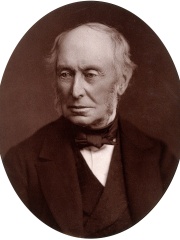
5. William Armstrong, 1st Baron Armstrong (1810 - 1900)
With an HPI of 67.28, William Armstrong, 1st Baron Armstrong is the 5th most famous British Engineer. His biography has been translated into 24 different languages.
William George Armstrong, 1st Baron Armstrong, (26 November 1810 – 27 December 1900) was an English engineer and industrialist who founded the Armstrong Whitworth manufacturing concern on Tyneside. He was also an eminent scientist, inventor and philanthropist. In collaboration with the architect Richard Norman Shaw, he built Cragside in Northumberland, the first house in the world to be lit by hydroelectricity. He is regarded as the inventor of modern artillery. Armstrong was knighted in 1859 after giving his gun patents to the government. In 1887, during Queen Victoria's golden jubilee year, he was raised to the peerage as Baron Armstrong, of Cragside.

6. John Ambrose Fleming (1849 - 1945)
With an HPI of 66.83, John Ambrose Fleming is the 6th most famous British Engineer. His biography has been translated into 35 different languages.
Sir John Ambrose Fleming (29 November 1849 – 18 April 1945) was a British electrical engineer and physicist. He is known for inventing the vacuum tube, designing the radio transmitter—with which the first transatlantic radio transmission was made—and establishing the right-hand rule used in physics.

7. Colin Chapman (1928 - 1982)
With an HPI of 66.49, Colin Chapman is the 7th most famous British Engineer. His biography has been translated into 31 different languages.
Anthony Colin Bruce Chapman (19 May 1928 – 16 December 1982) was an English design engineer, inventor, and builder in the automotive industry, and founder of the sports car company Lotus Cars. Chapman founded Lotus in 1952 and initially ran Lotus in his spare time, assisted by a group of enthusiasts. His knowledge of the latest aeronautical engineering techniques would prove vital towards achieving the major automotive technical advances for which he is remembered. Chapman's design philosophy focused on cars with light weight and fine handling instead of bulking up on horsepower and spring rates, which he famously summarised as "Adding power makes you faster on the straights. Subtracting weight makes you faster everywhere." Team Lotus won seven Formula One Constructors' titles, six Drivers' Championships, and the Indianapolis 500 in the United States, between 1962 and 1978 under his direction. The production side of Lotus Cars has built tens of thousands of relatively affordable, cutting edge sports cars. Lotus is one of but a handful of English performance car builders still in business after the industrial decline of the 1970s. Chapman suffered a fatal heart attack in 1982, aged 54.

8. Charles George Gordon (1833 - 1885)
With an HPI of 66.23, Charles George Gordon is the 8th most famous British Engineer. His biography has been translated into 41 different languages.
Major General Charles George Gordon CB (28 January 1833 – 26 January 1885), also known as Chinese Gordon, Gordon Pasha, Gordon of Khartoum and General Gordon, was a British Army officer and administrator. He saw action in the Crimean War as an officer in the British Army. He made his military reputation in China, where he was placed in command of the "Ever Victorious Army", a force of Chinese soldiers led by European officers which was instrumental in putting down the Taiping Rebellion, regularly defeating much larger forces. For these accomplishments, he was given the nickname "Chinese Gordon" and honours from both the Emperor of China and the British. He entered the service of the Khedive of Egypt in 1873 (with British government approval) and later became the Governor-General of the Sudan, where he did much to suppress revolts and the local slave trade. He then resigned and returned to Europe in 1880. A serious revolt then broke out in the Sudan, led by a Muslim religious leader and self-proclaimed Mahdi, Muhammad Ahmad. In early 1884, Gordon was sent to Khartoum with instructions to secure the evacuation of loyal soldiers and civilians and to depart with them. In defiance of those instructions, after evacuating about 2,500 civilians, he retained a smaller group of soldiers and non-military men. In the months before the fall of Khartoum, Gordon and the Mahdi corresponded; Gordon offered him the sultanate of Kordofan and the Mahdi requested Gordon to convert to Islam and join him, which Gordon declined. Besieged by the Mahdi's forces, Gordon organised a citywide defence that lasted for almost a year and gained him the admiration of the British public, but not of the government, which had wished him not to become entrenched there. Only when public pressure to act had become irresistible did the government, with reluctance, send a relief force. It arrived two days after the city had fallen and Gordon had been killed.

9. Adrian Newey (b. 1958)
With an HPI of 65.55, Adrian Newey is the 9th most famous British Engineer. His biography has been translated into 31 different languages.
Adrian Martin Newey (born 26 December 1958) is a British engineer, aerodynamicist, automotive designer, and motorsport executive. Since 2026, Newey has served as Team Principal, technical director and co-owner of Aston Martin in Formula One; he previously served as technical director of Leyton House and McLaren, chief designer of March and Williams, and chief technical officer of Red Bull Racing. Widely regarded as one of the greatest engineers in Formula One history, Newey's designs have won 14 Drivers' and 12 Constructors' titles and 223 Grands Prix between 1991 and 2024. After designing championship-winning Formula One cars for Williams and McLaren, Newey moved to Red Bull in 2006, his cars winning the Formula One Drivers' and Constructors' titles consecutively from 2010 to 2013, the Drivers' Championship in 2021, and both titles in 2022 and 2023. The Newey-designed RB19 is the most successful Formula One car in history, winning 21 out of the 22 races (95.45%) in which it competed. Newey's designs also won the 1985 and 1986 CART titles. On 1 May 2024, Red Bull Racing announced that Newey would leave his day-to-day Formula One design duties immediately and shift his focus to the RB17 hypercar. Newey departed the company in the first quarter of 2025 and commenced work at Aston Martin, though he is still involved in the RB17 hypercar project, including its updated final design.
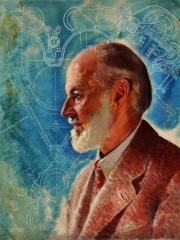
10. Henry Royce (1863 - 1933)
With an HPI of 65.22, Henry Royce is the 10th most famous British Engineer. His biography has been translated into 40 different languages.
Sir Frederick Henry Royce, 1st Baronet (27 March 1863 – 22 April 1933) was an English engineer famous for his designs of car and aeroplane engines that had a reputation for reliability and longevity. He and his two business associates Charles Rolls (1877–1910) and Claude Johnson (1864–1926) together founded the Rolls-Royce Limited company in 1904. Rolls-Royce Limited initially focused on large, 40–50 horsepower motor cars, the Silver Ghost and its successors. Royce produced his first aero engine shortly after the outbreak of the First World War, and aircraft engines became Rolls-Royce's principal product. Royce's health broke down in 1911, and he was persuaded to leave his factory in the Midlands at Derby and, taking a team of designers, move to the south of England spending winters in the south of France. He died at his home in Sussex in the spring of 1933.
People
Pantheon has 62 people classified as British engineers born between 1693 and 1978. Of these 62, 18 (29.03%) of them are still alive today. The most famous living British engineers include Adrian Newey, Patrick Head, and Pat Symonds. The most famous deceased British engineers include William John Macquorn Rankine, Isambard Kingdom Brunel, and Hertha Ayrton. As of April 2024, 5 new British engineers have been added to Pantheon including Nick Wirth, Tim Goss, and Christopher Boyes.
Living British Engineers
Go to all RankingsAdrian Newey
1958 - Present
HPI: 65.55
Patrick Head
1946 - Present
HPI: 64.52
Pat Symonds
1953 - Present
HPI: 51.99
Bob Bell
1958 - Present
HPI: 51.16
Kevin Warwick
1954 - Present
HPI: 50.59
Pat Fry
1964 - Present
HPI: 49.32
Mike Gascoyne
1963 - Present
HPI: 49.31
Mike Coughlan
1959 - Present
HPI: 49.30
James Allison
1968 - Present
HPI: 48.61
Charles Ingram
1963 - Present
HPI: 48.45
Nick Wirth
1966 - Present
HPI: 48.25
James Key
1972 - Present
HPI: 47.92
Deceased British Engineers
Go to all RankingsWilliam John Macquorn Rankine
1820 - 1872
HPI: 76.98
Isambard Kingdom Brunel
1806 - 1859
HPI: 69.19
Hertha Ayrton
1854 - 1923
HPI: 68.90
Godfrey Hounsfield
1919 - 2004
HPI: 67.50
William Armstrong, 1st Baron Armstrong
1810 - 1900
HPI: 67.28
John Ambrose Fleming
1849 - 1945
HPI: 66.83
Colin Chapman
1928 - 1982
HPI: 66.49
Charles George Gordon
1833 - 1885
HPI: 66.23
Henry Royce
1863 - 1933
HPI: 65.22
Charles Rolls
1877 - 1910
HPI: 64.56
Robert Stephenson
1803 - 1859
HPI: 64.27
George Cayley
1773 - 1857
HPI: 64.27
Newly Added British Engineers (2025)
Go to all RankingsNick Wirth
1966 - Present
HPI: 48.25
Tim Goss
1963 - Present
HPI: 43.11
Christopher Boyes
1968 - Present
HPI: 42.63
Jock Clear
1963 - Present
HPI: 42.33
Tom Stallard
1978 - Present
HPI: 38.14
Overlapping Lives
Which Engineers were alive at the same time? This visualization shows the lifespans of the 25 most globally memorable Engineers since 1700.





